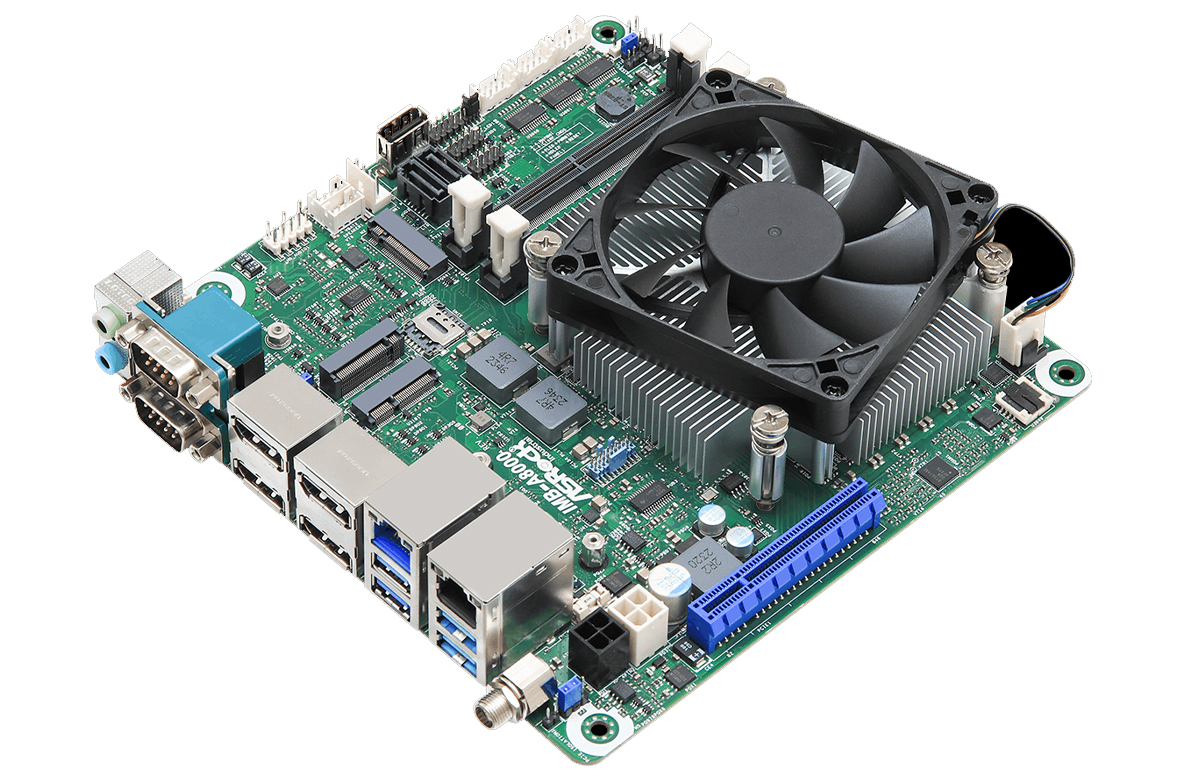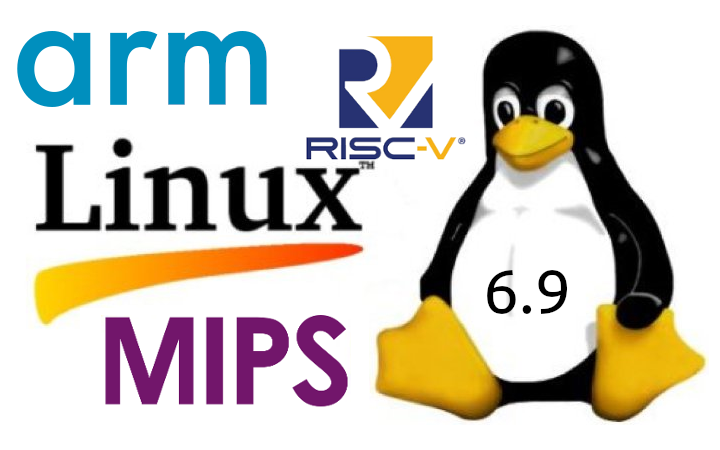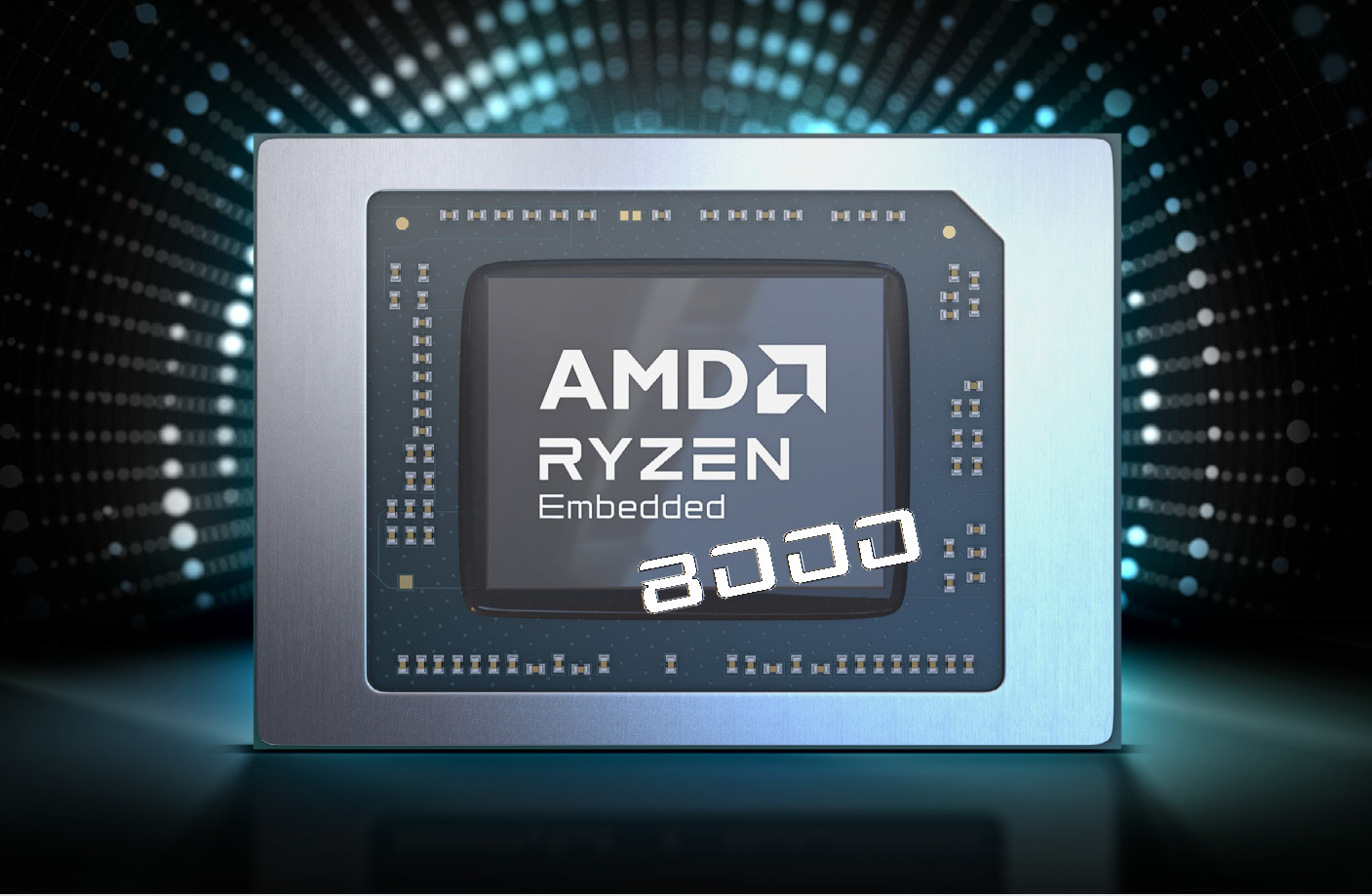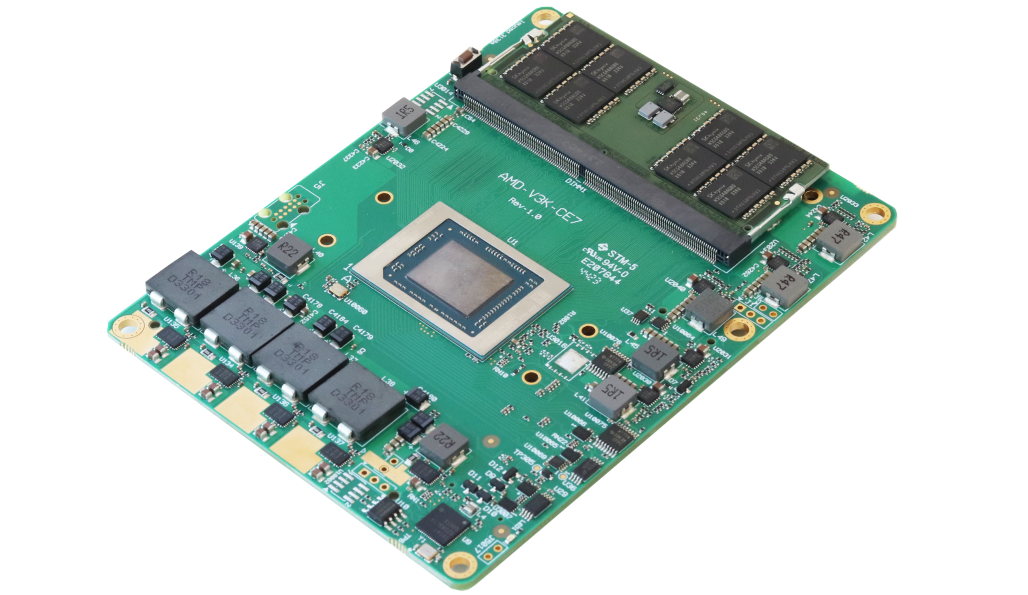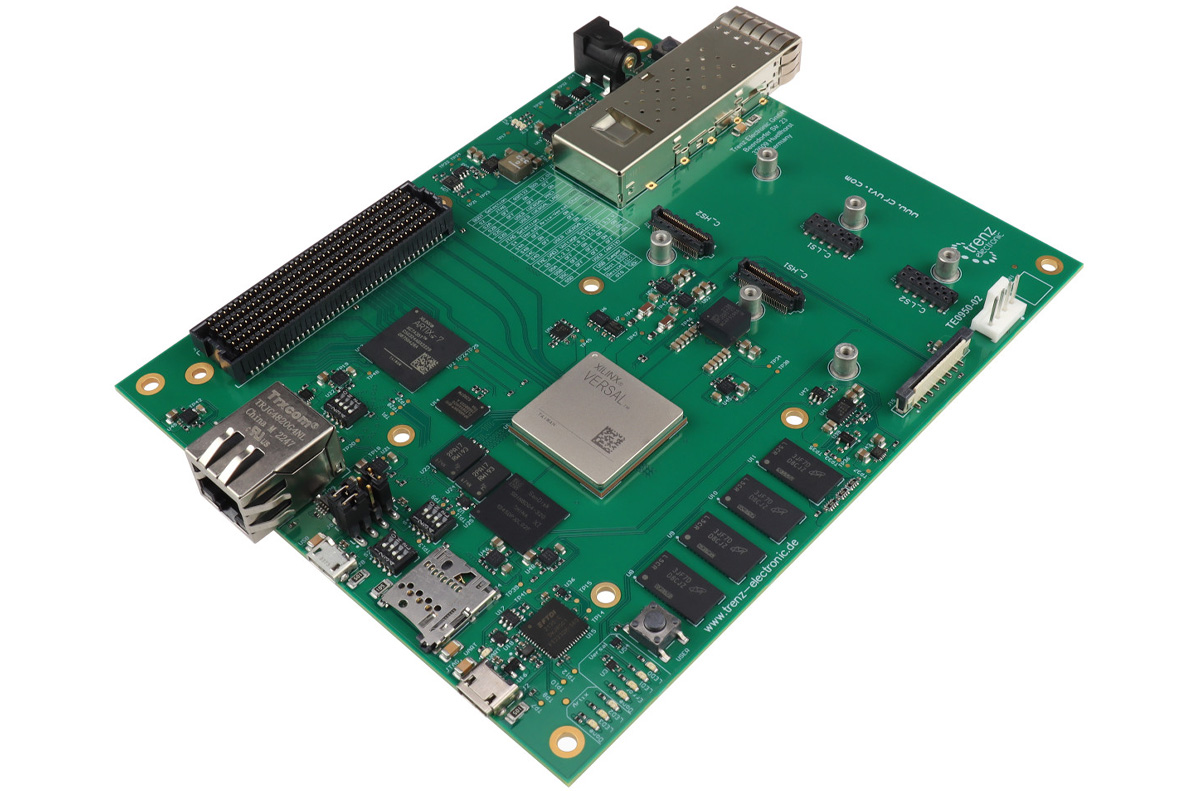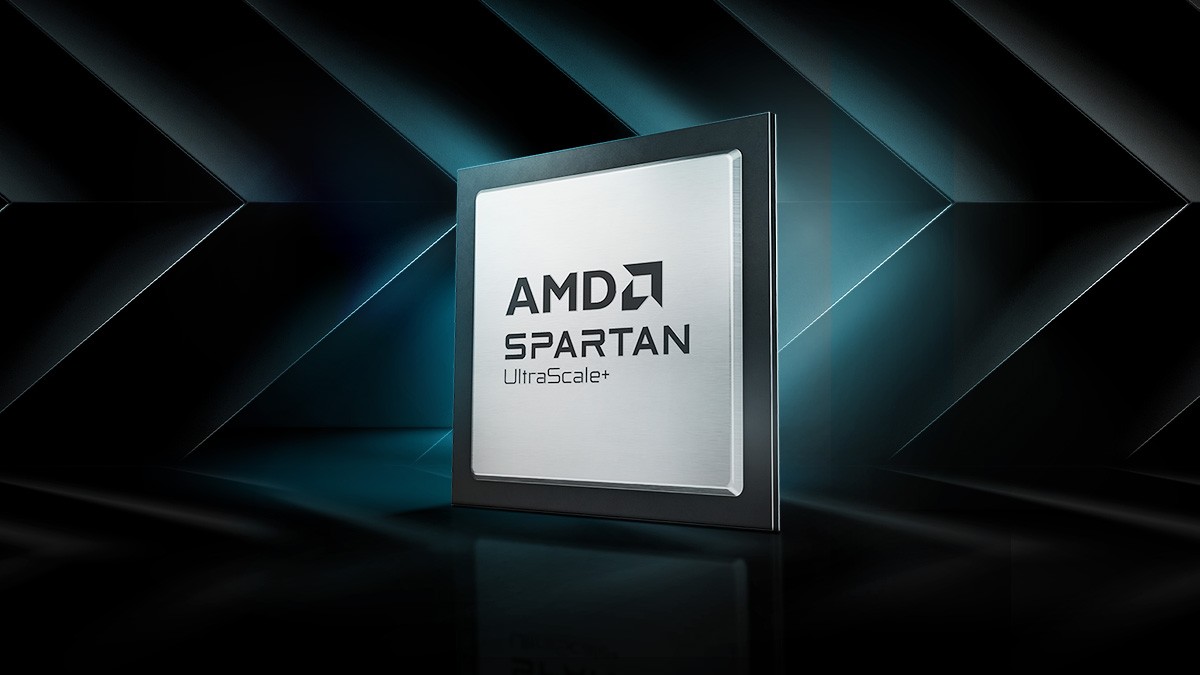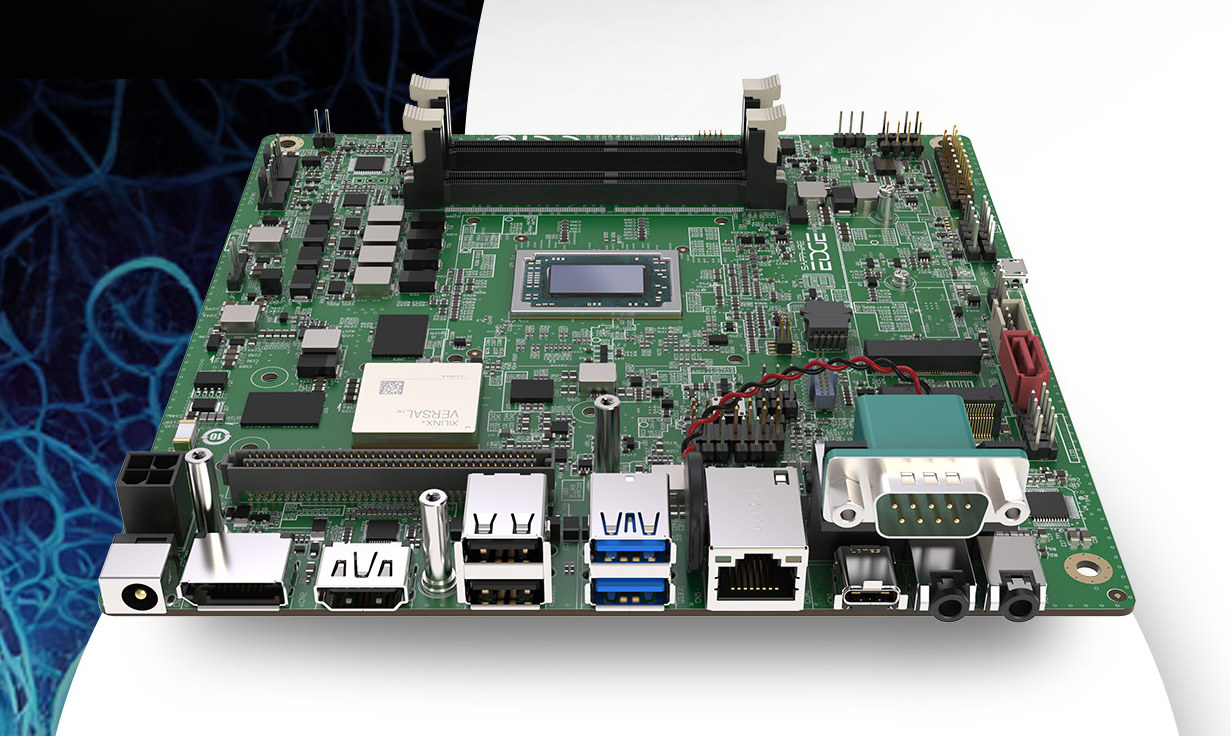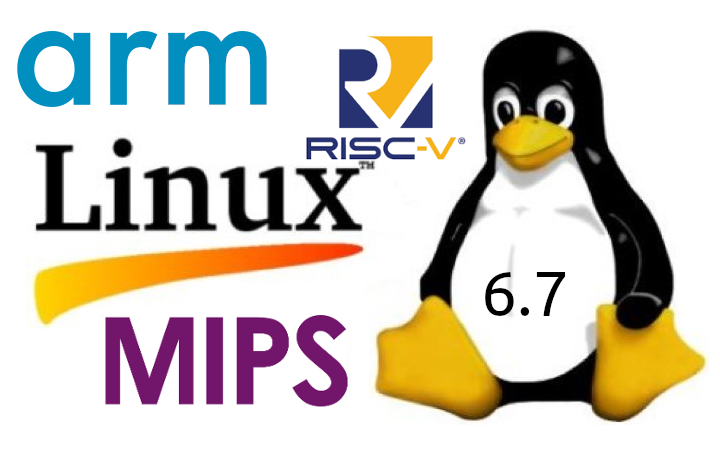ASRock Industrial recently launched the IMB-A8000, an industrial and embedded motherboard in a mini-ITX form factor. As an embedded motherboard, it is powered by AMD Ryzen Embedded 8000 series APU which features 8 cores and 16 threads, built with 4nm technology, and including a 16 TOPS AI accelerator. The motherboard supports up to 96GB of dual-channel DDR5-5600MHz memory and includes one 2.5GbE LAN port and one GbE LAN port. With a wide temperature range of -20ºC to 70ºC this motherboard can be used in applications like manufacturing, robotics, machine vision, and more. Previously we have seen SolidRun introduce the Bedrock R8000 industrial PC built around the Ryzen Embedded 8000 APU family. Other than that we have written about other Ryzen Embedded mini-ITX motherboards/SBCs such as the Flex Logic InferX Hawk combining an AMD Ryzen Embedded R2314 SoC with AI accelerators, the DFI RNO171 with Ryzen Embedded V2000 family, or more […]
Linux 6.9 release – Main changes, Arm, RISC-V, and MIPS architectures
Linus Torvalds has just announced the release of Linux 6.9 on LKML: So Thorsten is still reporting a few regression fixes that haven’t made it to me yet, but none of them look big or worrisome enough to delay the release for another week. We’ll have to backport them when they get resolved and hit upstream. So 6.9 is now out, and last week has looked quite stable (and the whole release has felt pretty normal). Below is the shortlog for the last week, with the changes mostly being dominated by some driver updates (gpu and networking being the big ones, but “big” is still pretty small, and there’s various other driver noise in there too). Outside of drivers, it’s some filesystem fixes (bcachefs still stands out, but ksmbd shows up too), some late selftest fixes, and some core networking fixes. And I now have a more powerful arm64 machine […]
AMD Ryzen Embedded 8000 Series processors target industrial AI with 16 TOPS NPU
AMD has recently “announced” the Ryzen Embedded 8000 Series processors in a community post with the latest AMD embedded devices combining a 16 TOPS NPU based on the AMD XDNA architecture with CPU and GPU elements for a total of 39 TOPS designed for industrial artificial intelligence. The Ryzen Embedded 8000 CPUs will be found in machine vision, robotics, and industrial automation applications to enhance the quality control and inspection processes, enable real-time, route-planning decisions on-device for minimal latency, and predictive maintenance, and autonomous control of industrial processes. AMD Ryzen Embedded 8000 key features and shared specifications: CPU – Up to 8 “Zen 4” cores, 16 threads Cache L1 Instruction Cache – 32 KB, L1 Data Cache = 32 KB (per core) L2 Cache – Up to 8 MB (total) L3 Cache- Up to 16 MB unified Graphics – RDNA 3 graphics with up to 6 WGPs (Work Group processors) […]
SolidRun’s first COM Express module is powered by the AMD Ryzen V3000 series APU
SolidRun has recently introduced the “Ryzen V3000 CX7” x86-based CoM Express 7 module powered by an AMD Ryzen V3000 Series V3C48 or V3C18I APU. This module is designed with AMD’s 6nm ‘Zen3’ architecture and can reach speeds up to 3.8GHz. It supports up to 96 GB of DDR5 memory, which can be either ECC or non-ECC, offering strong performance for different uses. The module features 20 PCIe Gen4 lanes, dual 10Gbps Ethernet MAC, and two SATA Gen3 6Gbps interfaces (on V3C18I and V3C48 models) all these features make this module useful for high-speed networking, embedded computing, and storage applications. Previously we have seen many similar COM Express & other modules based on the Ryzen V3000 Series of APUs including the ADLINK Express VR7 (COM Express) and another custom CPU module found in SolidRun Bedrock V3000 fanless industrial computer. Feel free to check those out if you are looking for similar […]
Trenz Electronic TE0950-03-EGBE21A – An AMD Versal AI Edge VE2302 SoC FPGA evaluation board
Trenz Electronic recently announced the TE0950-03-EGBE21A an evaluation board with AMD Versal AI Edge XCVE2302-1LSESFVA784 SoC FPGA. This board features 8 GB of DDR4 SDRAM and 128 MB of SPI Flash (as the primary boot option), a microSD card slot, a 32 GB eMMC flash (secondary boot), and an EEPROM with a MAC address. Additionally, the board supports a range of VE-series devices, such as VE2002, VE2102, VE2202, VE2302, and VM1102, enhancing its application versatility. The AMD Versal is a family of adaptive compute acceleration platforms (ACAPs) designed by AMD. Following its acquisition of Xilinx, it integrates CPU, GPU, and FPGA technologies along with dedicated software support to create a highly flexible development environment. Trenz Electronic VE2302 Evaluation Board Specifications: SoC – AMD Versal AI Edge XCVE2302-1LSESFVA784, A784 package, compatible with multiple VE-series devices RAM – 8 GB DDR4 SDRAM Storage 128 MB SPI Flash (primary boot option) MicroSD card […]
AMD announces the Spartan UltraScale+ FPGA family for cost-sensitive and IO-intensive applications
The Spartan UltraScale+ FPGA family is the latest inclusion to AMD’s Cost-Optimized portfolio, a series of FPGAs designed to balance cost, power, and form factor with affordability. The UltraScale+ FPGA family is designed for cost-sensitive, low-power applications requiring high I/O count and substantial security. Devices in the Spartan UltraScale+ family offer a high I/O to logic cell ratio for FPGAs built in 28nm and lower process technology (the highest in the industry, according to AMD), consume up to 30% less power than compared to the previous generation, and feature robust security features that outclass the rest of the Cost-Optimized portfolio. This FPGA family is built on the same UltraScale+ architecture as previous Artix and Zynq products. They are the first AMD UltraScale+ FPGAs to feature a hardened DDR memory controller and PCIe Gen4 x8 support, “providing both power efficiency and future-ready capabilities for customers.” AMD Spartan UltraScale+ specifications: System Logic […]
Sapphire Edge+ VPR-4616-MB mini-ITX motherboard features “AMD Embedded+” architecture with Ryzen R2314 & Versal VE2302
Sapphire Edge+ VPR-4616-MB is a new mini-ITX motherboard on the “new” AMD Embedded+ “architecture” comprised of an AMD Ryzen Embedded R2314 processor and an AMD Versal AI Edge VE2302 adaptive SoC (also called FPGA SoC…). The motherboard supports up to 64GB ECC/non-ECC DDR4 memory for the CPU, 8GB of memory for the adaptive SoC, supports SATA and NVMe storage, dual video output, 2.5GbE networking, and offers a range of USB ports and M.2 sockets for expansion. AMD Embedded+ solutions target sensor fusion, AI inferencing, industrial networking, control, and visualization applications. SAPPHIRE Edge+ VPR-4616-MB specifications: AMD Embedded+ Architecture Adaptive SoC Subsystem Main IC – AMD Versal AI Edge VE2302 with dual Arm Cortex-A72 core processor @ up to 1.6 GHz, dual-core Arm Cortex-R5F, 23 TOPS AI engine, FPGA fabric, etc… System Memory – 2x 4GB LPDDR4 Storage 1Gbit OSPI NOR flash for local boot 64 Kbit EEPROM for Board-ID Expansion 160-pin […]
Linux 6.7 release – Main changes, Arm, RISC-V, and MIPS architectures
Linus Torvalds has just announced the release of Linux 6.7, following Linux 6.6 LTS a little over two months ago: So we had a little bit more going on last week compared to the holiday week before that, but certainly not enough to make me think we’d want to delay this any further. End result: 6.7 is (in number of commits: over 17k non-merge commits, with 1k+ merges) one of the largest kernel releases we’ve ever had, but the extra rc8 week was purely due to timing with the holidays, not about any difficulties with the larger release. The main changes this last week were a few DRM updates (mainly fixes for new hw enablement in this version – both amd and nouveau), some more bcachefs fixes (and bcachefs is obviously new to 6.7 and one of the reasons for the large number of commits), and then a few random […]


